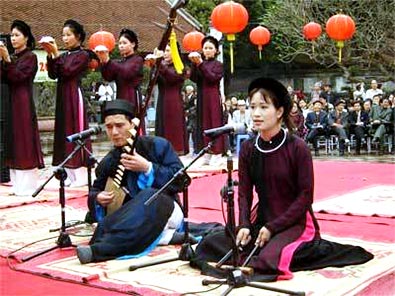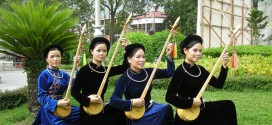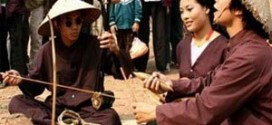Hat van, or hat chau van, is a traditional folk art which combines trance singing and dancing, a religious form of art used for extolling the merits of beneficent deities or deified national heroes.
Its music and poetry are mingled with a variety of rhythms, pauses, tempos, stresses and pitches. It is in essence a cantillation where the tunes and rhythm depend on the contents of the sung text and may be linked together into a suite, used in relation to a mythical happening, with hints at some features of modern life.

The art of hat van originated in the Red River delta and dates back to the 16th century, spreading later to the whole of the country. During its development course, hat van has taken in the essential beauty of folk songs from regions in the north, the center and the south.
There are two kinds of hat van: hat tho and hat len dong.
Hat tho (worship singing) is the chanting accompanying an act of worship. Hat tho is slow, grave, and dignified. Variations in the music are few and contain little contrasting pitch and stress.
Hat len dong is the cantillation accompanying psychic dancing claiming to respond to occult powers and expressing the will and orders of some super-natural being. It may contain many variations depending on the number of verses sung, often coming to a climax or slowing down to the tempo of a meditation.
The instrumental music accompanying hat van plays a very important role, either in emphasizing important passages or creating contrasting effects, in any event enriching the content of the chant.
The main instrument used in hat van performance is the dan nguyet or moon-shaped lute, accompanied by the striking of the phach (a piece of wood or bamboo) marking the rhythm, xeng (clappers), trong chau (drum) and chieng (gong). The 16-stringed zither (dan thap luc and flute (sao) are also used in the recitation of certain poetry and sometimes the eight-sound band (dan bat am) is also used in certain ceremonies.
Hat van has acquired over centuries both learned and folksy characteristics and has proven to be a strong attraction to musicologists at home and abroad.
http://www.youtube.com/watch?feature=player_embedded&v=pjAbT0uiDNc
 Vietnamese Culture and Tradition
Vietnamese Culture and Tradition 


